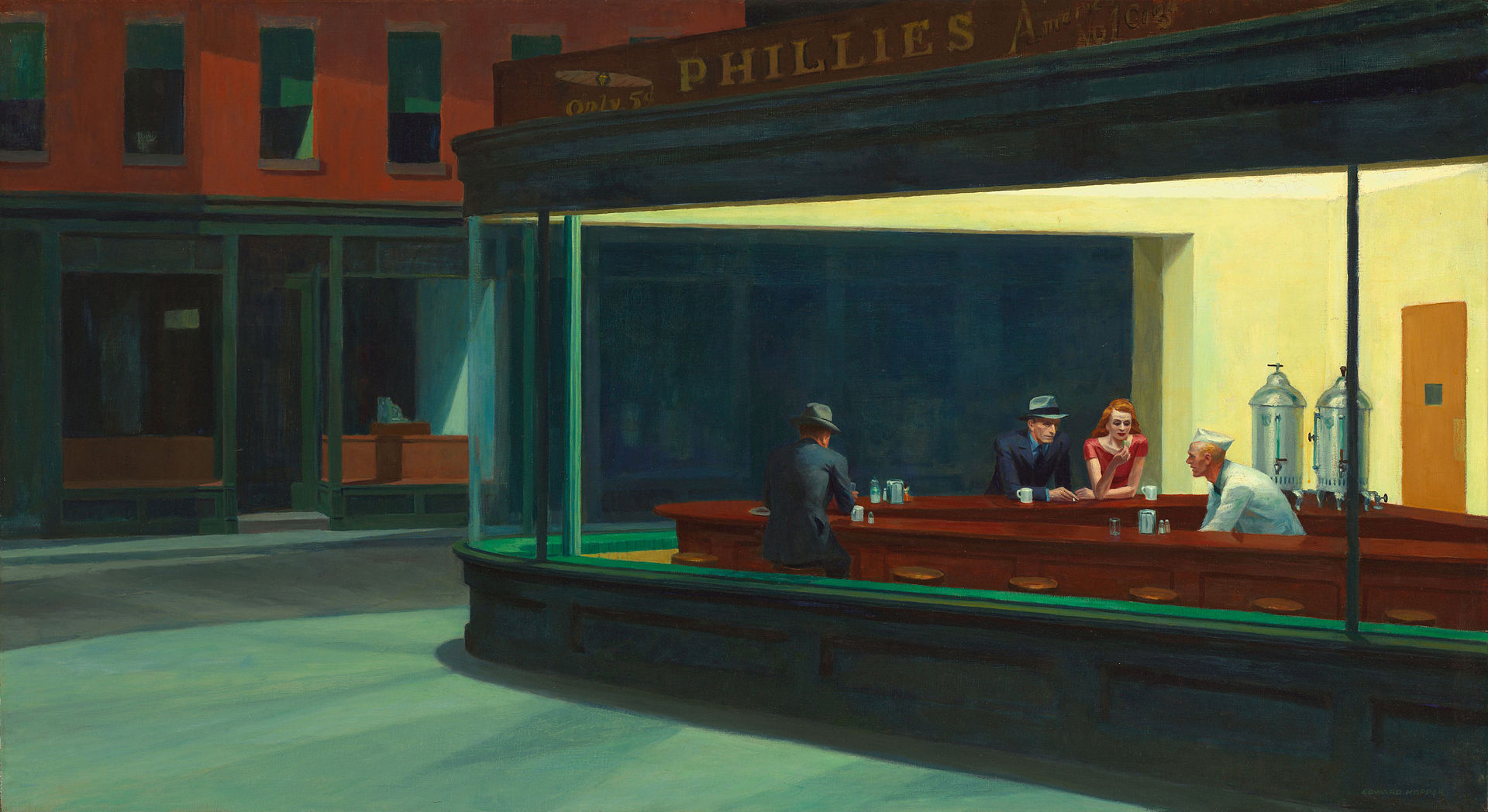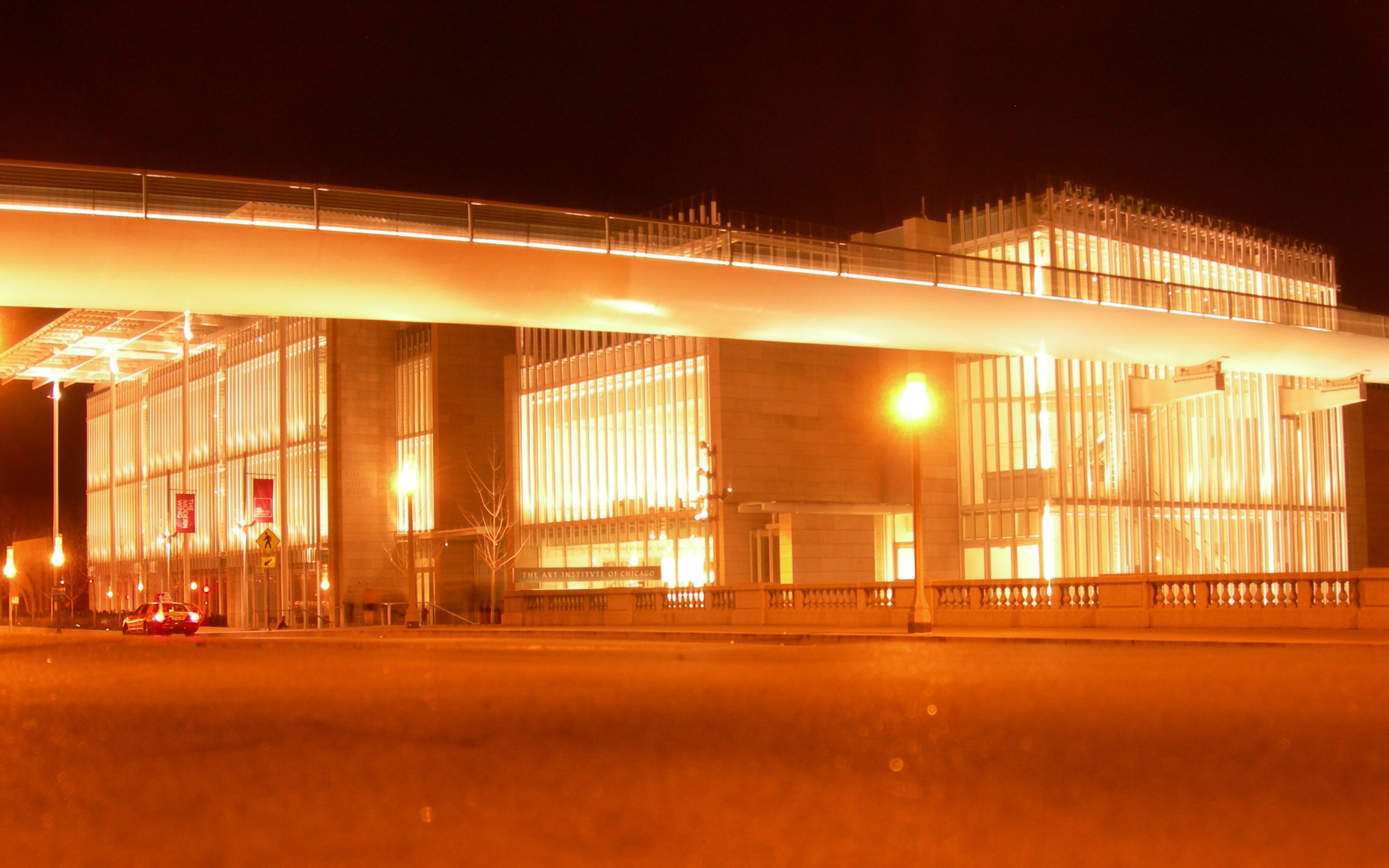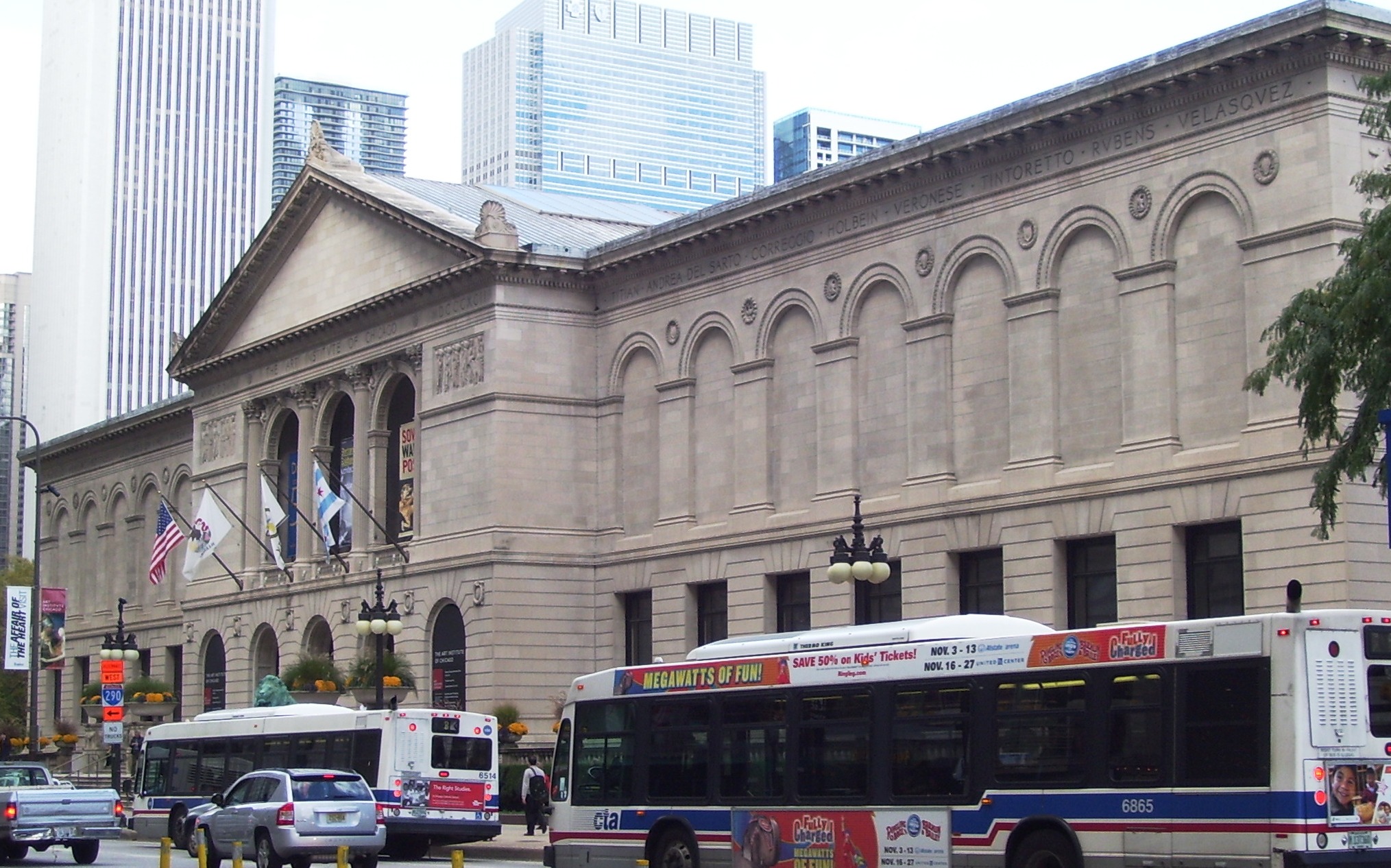This article uses material from the Wikipedia article Art Institue of Chicago, which is released under the Creative Commons Attribution-Share-Alike License 3.0.
Nighthawks by Edward Hopper, The Modern Wing in 2009 (Lonelymiesarchie / CC BY-SA), Michigan Avenue entrance of the Art Insitute of Chicago
The current building at 111 South Michigan Avenue is the third address for the Art Institute. It was designed in the Beaux-Arts style by Shepley, Rutan and Coolidge of Boston[43] for the 1893 World’s Columbian Exposition as the World’s Congress Auxiliary Building with the intent that the Art Institute occupy the space after the fair closed.Interior view, Art Institute of Chicago
The Art Institute’s famous western entrance on Michigan Avenue is guarded by two bronze lion statues created by Edward Kemeys. The lions were unveiled on May 10, 1894, each weighing more than two tons. The sculptor gave them unofficial names: the south lion is “stands in an attitude of defiance”, and the north lion is “on the prowl”. When a Chicago sports team plays in the championships of their respective league (i.e. the Super Bowl or Stanley Cup Finals, not the entire playoffs), the lions are frequently dressed in that team’s uniform. Evergreen wreaths are placed around their necks during the Christmas season.
The east entrance of the museum is marked by the stone arch entrance to the old Chicago Stock Exchange. Designed by Louis Sullivan in 1894, the Exchange was torn down in 1972, but salvaged portions of the original trading room were brought to the Art Institute and reconstructed.
The Art Institute building has the unusual property of straddling open-air railroad tracks. Two stories of gallery space connect the east and west buildings while the Metra Electric and South Shore lines operate below. The lower level of gallery space was formerly the windowless Gunsaulus hall, but is now home to the Alsdorf Galleries showcasing Indian, Southeast Asian and Himalayan Art. During renovation, windows facing north toward Millennium Park were added. The gallery space was designed by Renzo Piano in conjunction with his design of the Modern Wing and features the same window screening used there to protect the art from direct sunlight. The upper level formerly held the modern European galleries, but was renovated in 2008 and now features the Impressionist and Post-Impressionist galleries.
African Art and Indian Art of the Americas
The Art Institute’s African Art and Indian Art of the Americas collections are on display across two galleries in the south end of the Michigan Avenue building. The African collection includes more than 400 works that span the continent, highlighting ceramics, garments, masks, and jewelry.[16]
The Amerindian collection includes Native North American art and Mesoamerican and Andean works. From pottery to textiles, the collection brings together a wide array of objects that seek to illustrate the thematic and aesthetic focuses of art spanning the Americas.[17]
American Art
The Art Institute’s American Art collection contains some of the best-known works in the American canon, including Edward Hopper‘s Nighthawks, Grant Wood‘s American Gothic, and Mary Cassatt‘s The Child’s Bath. The collection ranges from colonial silver to modern and contemporary paintings.
Nighthawks was originally purchased by the museum in 1942 for $3,000;[18][19][20] its acquisition “launched” the painting into “immense popular recognition”.[21] Considered an “icon of American culture”,[18][22] Nighthawks is perhaps Hopper’s most famous painting, as well as one of the most recognizable images in American art.[23][24][25] American Gothic has been in the museum’s collection since 1930 and was only loaned outside of North America for the first time in 2016.[26] Wood’s painting depicts what has been called “the most famous couple in the world”, a dour, rural-American, father and daughter. It was entered into a contest at the Art Institute in 1930, and although not a favorite of some, it won a medal and was acquired by the museum.[27][28]
Ancient and Byzantine
The Art Institute’s ancient collection spans nearly 4,000 years of art and history, showcasing Greek, Etruscan, Roman, and Egyptian sculpture, mosaics, pottery, jewelry, glass, and bronze as well as a robust and well-maintained collection of ancient coins. There are around 5,000 works in the collection, offering a comprehensive survey of the ancient and medieval Mediterranean world, beginning with the third millennium B.C. and extending to the Byzantine Empire.[29] The collection also holds the mummy and mummy case of Paankhenamun.[30][31]



